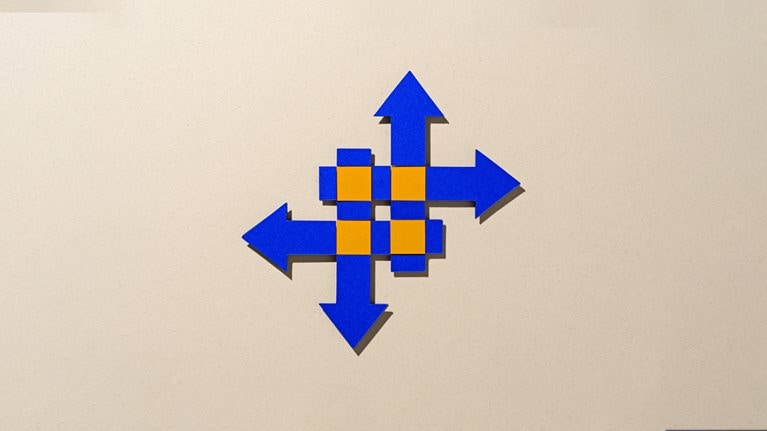Technology, media, and telecommunications (TMT) companies are connected in several ways. They have similar drivers of growth. They all generate connectivity among people and systems. They have all been faced with constant and rapid digital innovation, requiring them to pivot their businesses quickly. As a result, many have continued to rely on mergers and acquisitions to offset investment costs and expand revenues. In 2023, for instance, TMT continued to contribute a significant 17 percent of the value of global M&A activity, a share that was only slightly down from 2022.

Nonetheless, TMT has not been immune to the overall decline in transactions and value. Transactions fell about 50 percent in 2023 to about 1,300 deals. Total deal value dropped 43 percent to $516 billion. The bulk of the decline was in North America and in technology, where higher interest rates and depressed spending prompted many companies to focus on shoring up core operations rather than expanding into new areas.
Still, M&A continues to be a key growth driver in TMT. A few examples tell the story. In technology, software companies have often used M&A to acquire new intellectual property and talent—as demonstrated by Cisco Systems’ acquisition of cybersecurity company Splunk, for instance. The media industry has seen significant consolidations, as businesses seek to expand the share of consumers with whom they engage. For example, multiple US companies have merged for this purpose. Further, telecom operators have consolidated and optimized their portfolios through acquisitions and joint ventures, as deals across Europe confirm.
Looking ahead, we see early indications of a resurgence in M&A activity. For one, the relatively weak economic profit of smaller companies provides compelling M&A opportunities for top players seeking to gain access to new profit pools. In addition, private equity has been playing an increasingly important role as PE firms seek higher returns from rolling up software players or go after relatively stable, known returns from telecom infrastructure players.
As we have seen over time, programmatic M&A, in which companies execute a series of smaller deals to support a specific business case or M&A theme, continues to generate the most value compared to other strategies. As TMT players gear up, success requires them to be sharp and precise in aligning their deals and execution efforts with their corporate strategies.
Explore the full collection of articles from our Top M&A trends in 2024 report >
The enduring value of programmatic M&A
Our research shows that, in TMT, programmatic M&A generates excess total shareholder returns of 2.3 percent—a much better performance than other M&A strategies, such as large deals or selective M&A (exhibit).

In this context, small deals of under $500 million have continued to dominate the market in recent years, making up 88 percent of total transactions between 2020 and 2023, and 21 percent of total deal value. Many players are still seeking to acquire technology and people to avoid lengthy in-house development cycles, which are historically more expensive and riskier.
At the same time, megadeals of more than $5 billion have remained more common in TMT than in other sectors, with 44 percent of total transaction value from 2018 to 2023 compared to 34 percent across all other sectors. As mentioned, telecom players continue to consolidate to reduce high infrastructure costs. One example is the merger of broadband company Virgin Media with mobile provider O2. Separately, some media and tech players have sought to expand beyond their core—into gaming and other areas, for example.
While the outlook for programmatic M&A still looks promising in TMT, players must also be mindful of the characteristics, nuances, and trends unique to each of the three subsectors.
Technology: Software remains the center of activity
Software drove 80 percent of all technology M&A activity in 2023, with total transaction value at $253 billion—down 60 percent from the previous year. This dominance has been consistent over the past decade, with both existing software companies and non-tech players using software M&A as a key growth mechanism. We expect software to remain an active subsector for M&A activity in 2024, given the following:
- Valuations of early-stage players are beginning to come down from record highs that had been driven up by private equity and non-tech players entering the market. If private equity players were to decrease their M&A and double-down on their existing portfolios, this could leave opportunities for strategic buyers.
- Confidence is rising, reflected in a return of notable venture-backed IPOs in late 2023 after a 20-month break from listings in the US—for example, the marketing automation company Klaviyo.
- Companies will continue to use M&A to acquire IP and talent rather than go through the expensive and time-consuming process of developing it in house. The Cisco-Splunk deal mentioned earlier is a prime example.
- Other growth options perform far worse than programmatic M&A. For instance, organic strategies in technology erode total shareholder return (TSR) by 1.7 percent, compared to positive 0.4 percent for programmatic M&A.
We anticipate that the most successful players will consider these plays:
Expansion, focused on cross-selling. We expect continued expansion within existing product categories, new categories, or geographically, but with a greater focus on fulfilling the cross-sell proposition. Successful players will take a programmatic approach to thoughtfully acquire companies where they can add value through technological capabilities or management knowledge, given that de novo innovations are rare. For example, Hexagon, a creator of automation systems, has completed over 170 acquisitions since 2000, and now plays across multiple industries in both software and hardware. Winners will also significantly strengthen their integration and organic scaling capabilities to deliver on revenue synergies and extract value from their acquisitions. These are skills that the sector has been less focused on historically, given high valuations.
Reconfiguration of the portfolio. Historical evidence suggests that being a top three or four player in a specific industry or product segment has significant value, given the benefits of scale. While many companies have broadened their portfolios to grow their top lines, they should now use a critical lens to identify which of their segments are the most relevant and profitable. Successful players will consider divestments and asset swaps to narrow their focus and allow their organizations to allocate resources to products and services where they can truly win.
Media: Programmatic strategies unlock exceptional value
Media was one of the few sectors that saw an increase in deals in 2023, with deal value at $89 billion—up 19 percent from 2022, but still below the levels reached in 2020 and 2021. Looking ahead, we see that the industry still exhibits considerable fragmentation in several sub-segments—such as publishing, where there are few cross-geography players. That fragmentation, plus increasing pressure on margins, might drive some companies to seek scale through megadeals, which could also allow them to secure funding for an accelerated shift to digital business models.
However, players need to be cautious, as government competition authorities have struck down several recent horizontal mergers due to concerns about market overlap and potentially excess power. For instance, the French TV companies TF1 and M6 called off their deal after regulators expressed concerns about media consolidation. A judge blocked the merger of Penguin Random House and Simon & Schuster in the US, saying it could harm competition in publishing.
More fundamentally for players across media formats, programmatic M&A approaches have significantly outperformed megadeals. Historically, a programmatic strategy in media delivered impressive excess TSR of 5.9 percent—twice the return in other sectors. Going forward, we expect that the most successful players will continue to take a programmatic approach and to thoughtfully acquire targets based on one of several archetypes that suit them best:
Multimedia shops. With a large portfolio of assets and brands across media verticals, multimedia shops have highly diversified revenue streams, an established core customer base, and, typically, national scale in advertising. M&A helps them to expand content types and offer robust user experience across platforms, thereby improving brand value and increasing consumer engagement. However, integration of many of these acquisitions has been limited so far—allowing acquirers further opportunity to extract value and bring together their portfolio.
Media vertical heroes. Several players, primarily in EMEA, have doubled-down on a specific media vertical, such as radio, audiovisual content production, music events, TV broadcasting, or book publishing. They have prioritized using M&A to build and maintain a unique and market-leading value proposition with national or international scale. Successful players will integrate these transactions to gain scale within their niche and become the ultimate destination for consumers in that space.
“Beyond-media” conglomerates. These players derive most of their revenues from a core media business, but they have expanded into non-media products across industries to monetize their reach. This model is seen more regularly in EMEA, Latin America, and APAC, with players engaging in strategic M&A to use their customer insights and consumer reach to compete with incumbents more effectively. For example, traditional publishing businesses have expanded into online marketplaces. As competition authorities become more cautious about media deals, it will become increasingly important for national companies to adapt their M&A approach, looking beyond their geography or sector (which could attract opposition) to compete with global players.
Digital disruptors. These companies are growing rapidly with an innovative tech-based proposition, but their core business remains outside media. They have huge cash reserves and access to capital, so they can use M&A to enter media verticals and capture customers from more traditional companies. Examples include US companies that have acquired businesses in online gaming and content creation. By capitalizing on their existing customer base and technology capabilities, these disruptors can drive monetization across the entire business and undercut traditional media companies.
Telecom: Growing or splitting up can both succeed
Telecommunications operators saw $111 billion worth of transactions in 2023, down 29 percent from 2022. As in the other TMT sectors, players have gained significant value from programmatic M&A, achieving excess TSR of 3.2 percent during the year while other strategies either netted little or eroded value.
EMEA was the top region for telecom M&A activity during 2023, with 57 percent of global transaction value. Several types of deals predominated, including consolidation of mobile operators and convergence of fixed-mobile players (such as Virgin Media and O2). Some players have pursued operational de-layering—separating their network infrastructure and operations from customer-facing operations—to increase specialization and value various parts of the business appropriately. Private equity has also started to play a much bigger role in this space. Meanwhile, telecom M&A activity in the US has fallen steadily over the past decade as the market becomes highly consolidated.
Looking forward, we expect to see three themes for M&A-savvy telecom operators:
- Further consolidation to capture cost synergies while increasing average revenue per user from cross- and up-selling and reducing the risk of churn from converged customers. In terms of options, EMEA still has some markets with more than three mobile network operators, including France, Italy, and the UK. By contrast, APAC has limited opportunities remaining for mobile-mobile consolidation, with many markets already at just two or three operators. In addition, fixed-mobile convergence will remain a trend in Europe, particularly in countries where pure mobile or fixed players have significant market share. These include Denmark, Ireland, the Czech Republic, and Romania. We also expect to see more complex deals, spurred by regulators’ demands for remedies to maintain market competitiveness. For instance, the European Commission has required the sale of assets before approving some recent telecom operator deals.
- De-layering will continue to accelerate in Europe. De-layering enables operators to optimize their capital structures, focus more attention on their customers, and improve management focus. It can take a number of forms. The primary one will continue to be companies separating their network infrastructure and operations from customer-facing operations. Companies may also seek internal P&L splits or joint ventures. JVs, in particular, can help companies attract investments into their network expansion upgrades, or unlock cost synergies by sharing fixed and/or mobile networks with another operator. In APAC, we see some de-layering of data centers, while others sell and lease back their cell towers. However, the de-layering trend in APAC is much less developed than in Europe.
- Diversification will be increasingly important as telecoms face decreasing revenues per customer and new competition from established tech players and start-ups. An erosion in value from traditional telecom products will force players to look elsewhere for returns, although executing such diversification has historically been more challenging in the less protected markets that make up the majority of the sector. Nonetheless, research suggests that there is demand for new services, with 56 percent of customers open to buying a service other than connectivity from their operators.1 This is likely to be particularly important in developing markets, where increasing the average revenue per customer is difficult. Examples of such new services could include cloud, cybersecurity, Internet of Things, fintech, healthtech, and artificial intelligence.
Caution: Regulatory obstacles need attention
As we have already suggested in some specific cases, a key trend that TMT players must contend with is growing regulatory scrutiny. The results of this trend will range from longer waits for approvals (compared to other industries) to increased deal complexity as regulators require more remedies, such as divestitures, to address competition concerns. This increased scrutiny has different consequences for the three subsectors:
- In technology, regulators concerned about geopolitical tensions may sharply scrutinize deals that put critical infrastructure and data in the hands of foreign entities.
- In media, large companies have expanded their reach globally, and regulators continue to refine the definition of markets and assess the market power of individual players.
- In telecom, consolidation may help companies manage significant infrastructure requirements and investment costs, but it is reducing the number of competitors in some markets, such as the US and Sweden. Regulators are keen to maintain healthy competition and protect consumers.
2024 and beyond
Looking ahead to the M&A landscape in coming years, technology, media, and telecommunications will remain key sectors to watch, due to their dynamic nature and potential for disruption. Given the historical importance of programmatic M&A to drive value, we expect to see a continuation of that trend. However, at the same time many businesses have become increasingly complex, with broad product portfolios and large geographic footprints. Therefore, the savviest players will not only look to new products, services, and markets, but they will also re-evaluate their portfolios and engage in strategic divestments. Both of these strategies will allow them to thoughtfully reshape their organizations and retain or expand strategic and competitive advantages.











